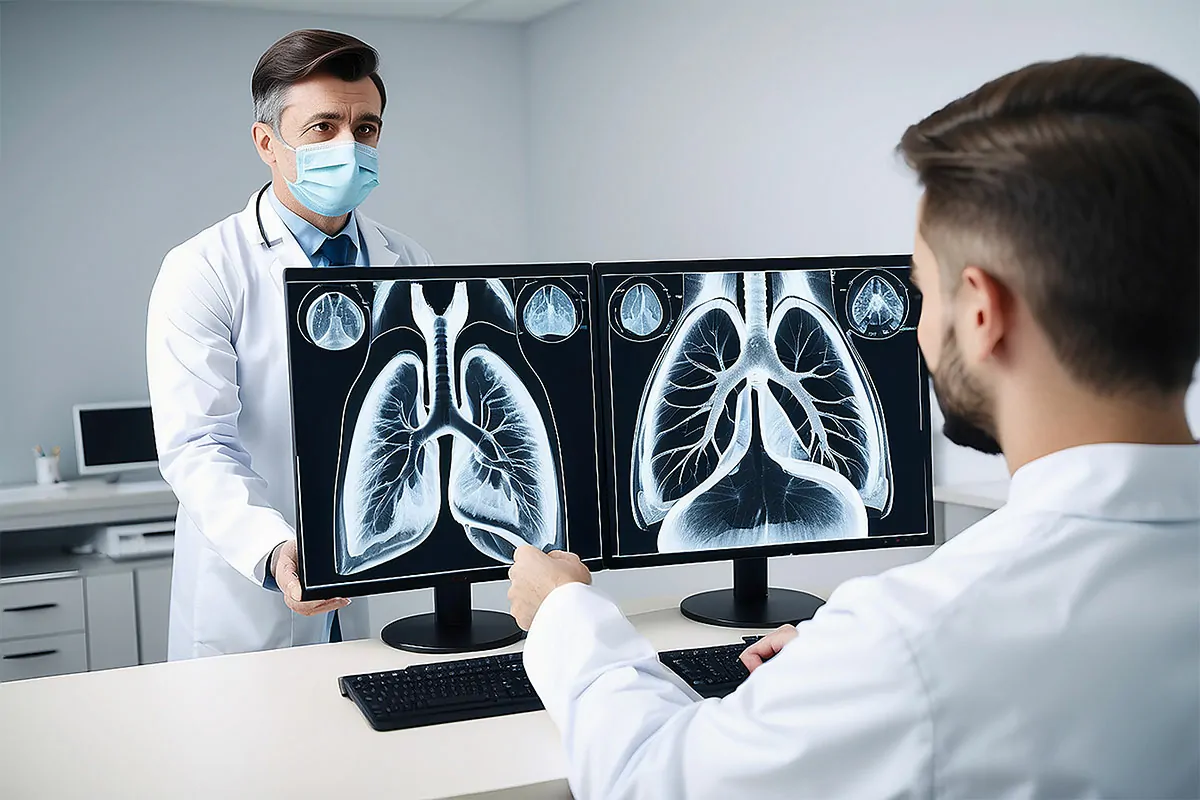Pulmonary Function Test (PFT)

Pulmonary Function Tests (PFTs) are essential diagnostic tools used to evaluate how well your lungs are functioning. These tests measure various aspects of lung performance, including volume, capacity, airflow rates, and gas exchange. The results help healthcare providers diagnose lung disorders and determine appropriate treatment plans.
Types of Lung Disorders Assessed by PFTs
-
Obstructive Disorders:
- Characterized by difficulty in air flowing out of the lungs due to airway resistance.
- Results in slower airflow.
- Examples: Asthma, Chronic Obstructive Pulmonary Disease (COPD).
-
Restrictive Disorders:
- Occurs when lung tissue or chest muscles cannot expand sufficiently.
- Leads to reduced lung volume and airflow issues.
- Examples: Pulmonary fibrosis, sarcoidosis.
Methods of Conducting PFTs
PFTs can be performed using one or a combination of the following methods, depending on the required diagnostic information:
-
Spirometry:
- Utilizes a spirometer, a device connected to an electronic machine, with a mouthpiece for breathing tests.
-
Plethysmography:
- Conducted inside an airtight chamber where you sit or stand to perform breathing exercises.
Measurements in PFTs
PFTs provide detailed insights into lung function through various parameters, including:
- Tidal Volume: Amount of air inhaled or exhaled during normal breathing.
- Minute Volume: Total volume of air exhaled per minute.
- Vital Capacity: Maximum volume of air exhaled after a deep inhalation.
- Functional Residual Capacity: Air remaining in the lungs after a normal exhalation.
- Residual Volume: Air left in the lungs after maximum exhalation.
- Total Lung Capacity: Total volume of air in the lungs after the deepest inhalation.
- Forced Vital Capacity (FVC): Air exhaled forcefully and rapidly after maximum inhalation.
- Forced Expiratory Volume (FEV): Air exhaled during the first, second, and third seconds of the FVC test.
- Forced Expiratory Flow: Average flow rate during the middle half of the FVC test.
- Peak Expiratory Flow Rate (PEFR): Fastest rate of air exhalation.
Why Choose PFTs?
PFTs are crucial for diagnosing and managing respiratory conditions, assessing the impact of chronic lung diseases, and guiding treatment plans.
Take the first step toward better respiratory health today—book your Pulmonary Function Test with us!
